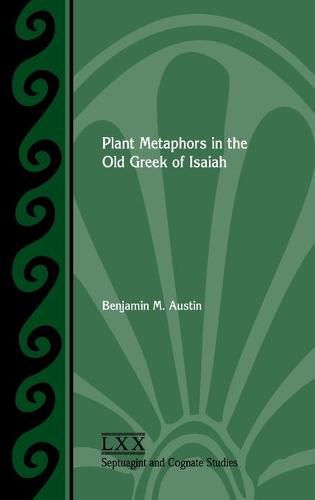Readings Newsletter
Become a Readings Member to make your shopping experience even easier.
Sign in or sign up for free!
You’re not far away from qualifying for FREE standard shipping within Australia
You’ve qualified for FREE standard shipping within Australia
The cart is loading…






This title is printed to order. This book may have been self-published. If so, we cannot guarantee the quality of the content. In the main most books will have gone through the editing process however some may not. We therefore suggest that you be aware of this before ordering this book. If in doubt check either the author or publisher’s details as we are unable to accept any returns unless they are faulty. Please contact us if you have any questions.
In this study Benjamin M. Austin analyzes all the plant metaphors in Isaiah and classifies them according to the metaphor translation techniques used by the Septuagint translator. He shows how the translator took the context of each metaphor into account and that the natural features of the plants under discussion at times influences their translation. Austin argues that the translator tried to translate metaphors vividly and with clarity, sometimes adjusting them to match the experience of his audience living in Egypt. Austin examines metaphors by their vehicles, so that the translation of similar metaphors can be compared.
$9.00 standard shipping within Australia
FREE standard shipping within Australia for orders over $100.00
Express & International shipping calculated at checkout
This title is printed to order. This book may have been self-published. If so, we cannot guarantee the quality of the content. In the main most books will have gone through the editing process however some may not. We therefore suggest that you be aware of this before ordering this book. If in doubt check either the author or publisher’s details as we are unable to accept any returns unless they are faulty. Please contact us if you have any questions.
In this study Benjamin M. Austin analyzes all the plant metaphors in Isaiah and classifies them according to the metaphor translation techniques used by the Septuagint translator. He shows how the translator took the context of each metaphor into account and that the natural features of the plants under discussion at times influences their translation. Austin argues that the translator tried to translate metaphors vividly and with clarity, sometimes adjusting them to match the experience of his audience living in Egypt. Austin examines metaphors by their vehicles, so that the translation of similar metaphors can be compared.